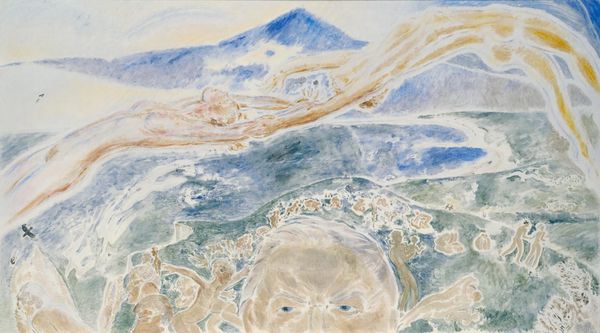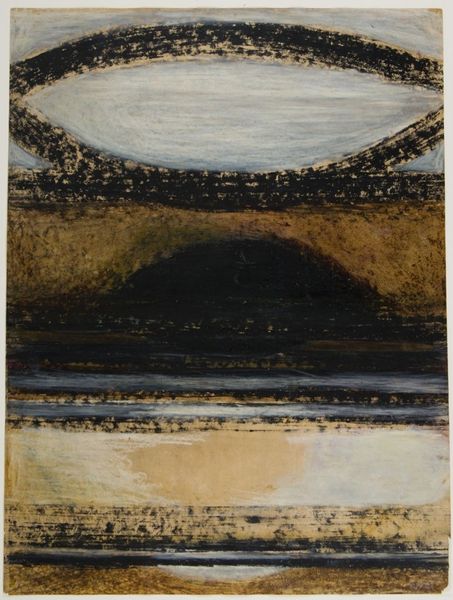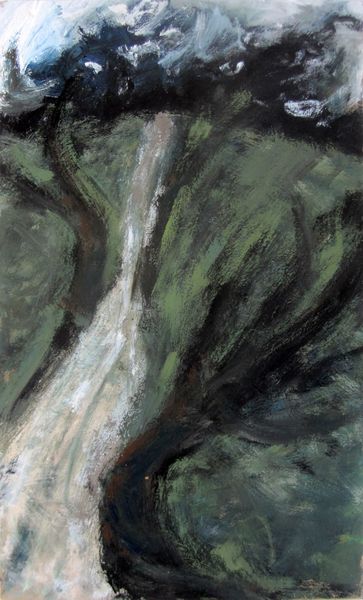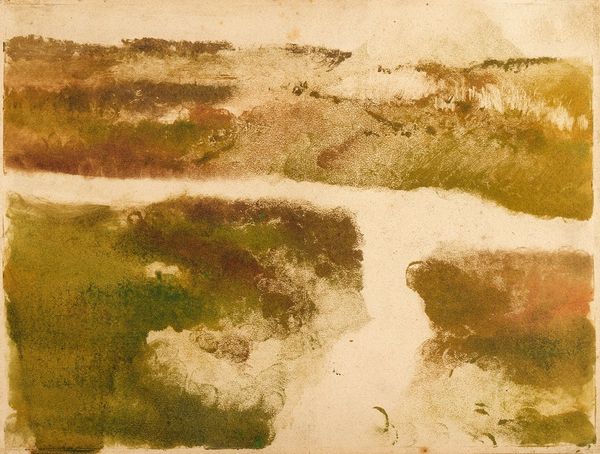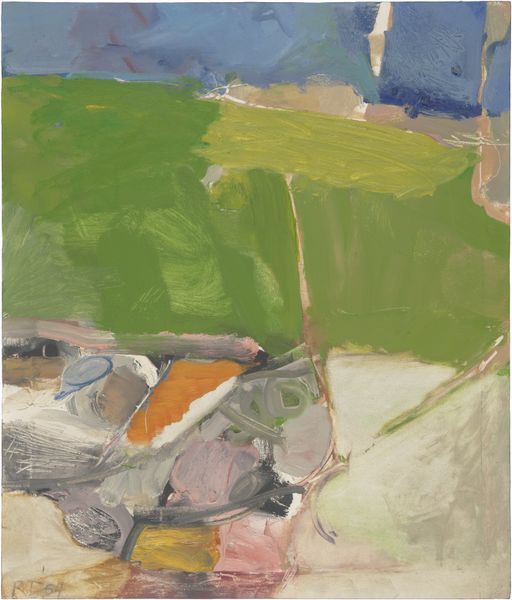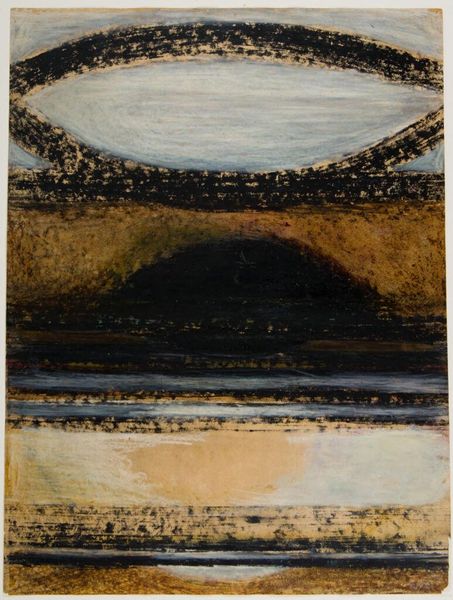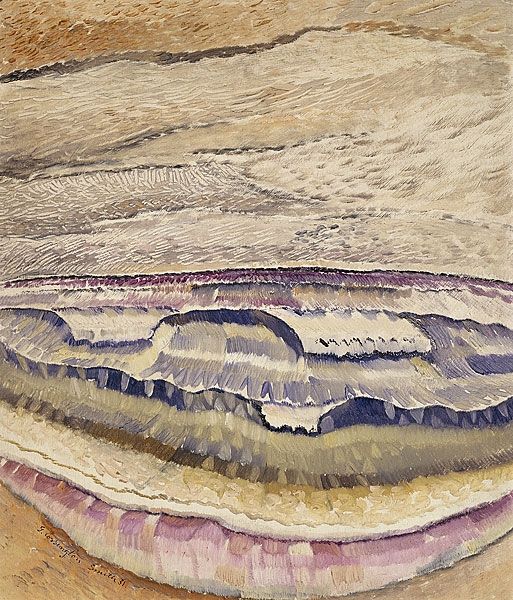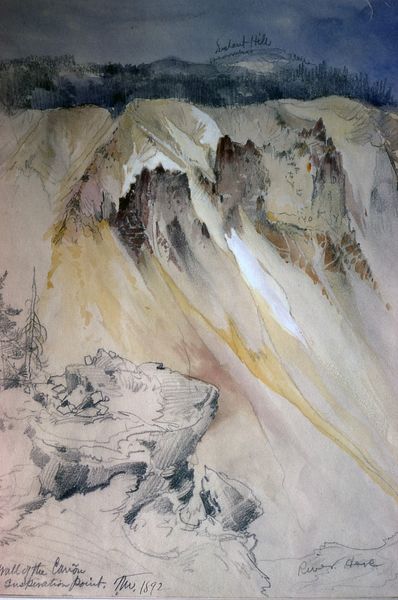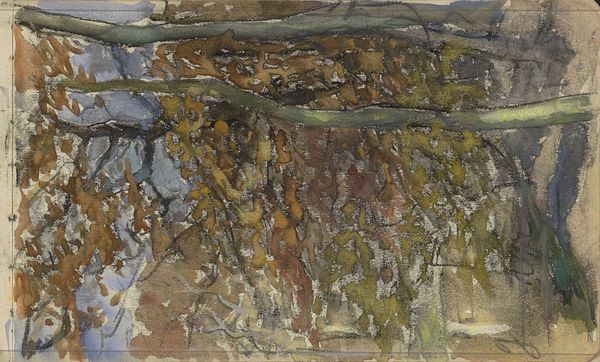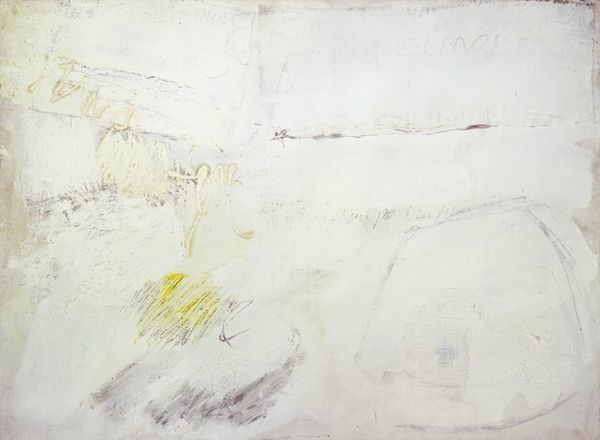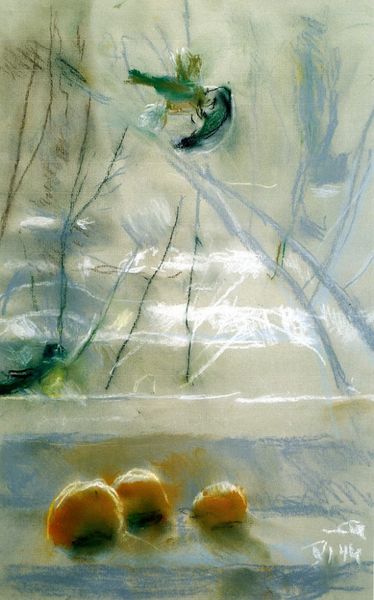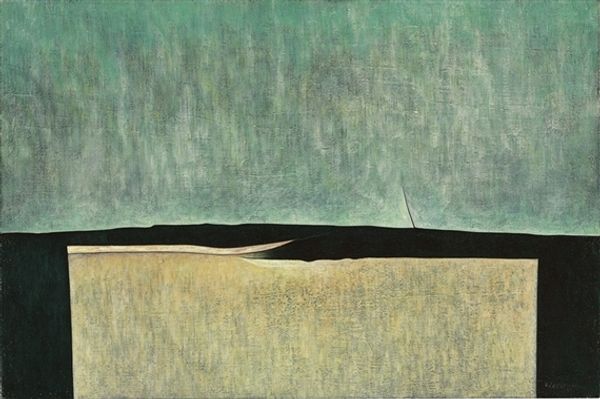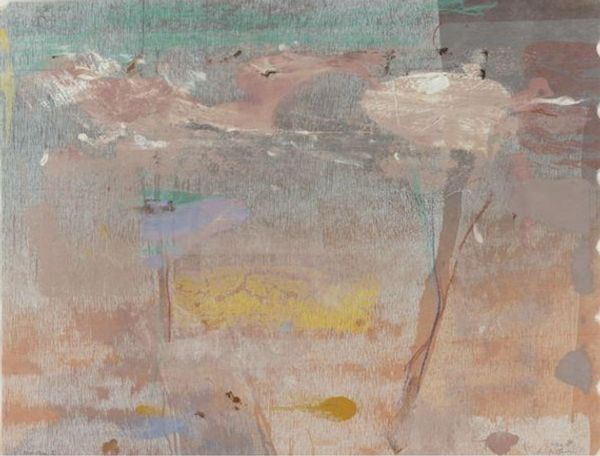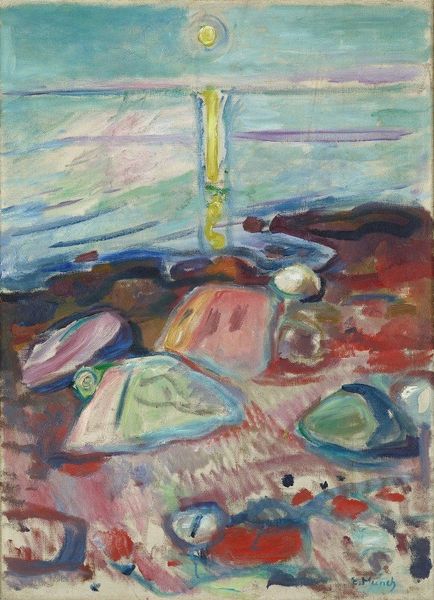
Dimensions: support: 609 x 508 mm frame: 716 x 615 x 80 mm
Copyright: © The estate of Adrian Stokes | CC-BY-NC-ND 4.0 DEED, Photo: Tate
Editor: So this is Adrian Stokes's "Landscape, West Penwith Moor." It feels quite muted and earthy. What can you tell me about it? Curator: Well, consider the historical context. Stokes painted this landscape during a period of intense social and political upheaval. His choice to depict the land, rather than figures, speaks to a desire to locate a sense of stability and perhaps belonging in the face of societal fragmentation. Editor: Belonging? Curator: Yes, how does the land itself become a character? The muted palette and the way the land seems to fold in on itself...do you see a parallel with the psychological landscapes explored by his contemporaries grappling with trauma? Editor: I see that. It's less about the beauty of nature and more about its weight, its history. Thanks! Curator: Exactly! Thinking about art as a reflection of its time opens up so many avenues for understanding.
Comments
tate 8 months ago
⋮
http://www.tate.org.uk/art/artworks/stokes-landscape-west-penwith-moor-t04123
Join the conversation
Join millions of artists and users on Artera today and experience the ultimate creative platform.
tate 8 months ago
⋮
Stokes began to paint in 1936. He completed this view before beginning to study painting at the Euston Road School in autumn 1937. Penwith Moor is in West Cornwall, where Stokes lived for several years from 1939, at Carbis Bay, near St Ives. He came to think of West Cornwall, 'the penisula between the two seas, extending ... from St Ives to Land's End', within which this moor is located, as 'the only part of Britain belonging to the geography of the Ancient World'. He was acutely aware of the geology of a terrain and of its history and natural resources. It delighted him to think that the Romans had mined the Cornish landscape for copper. Gallery label, September 2004
